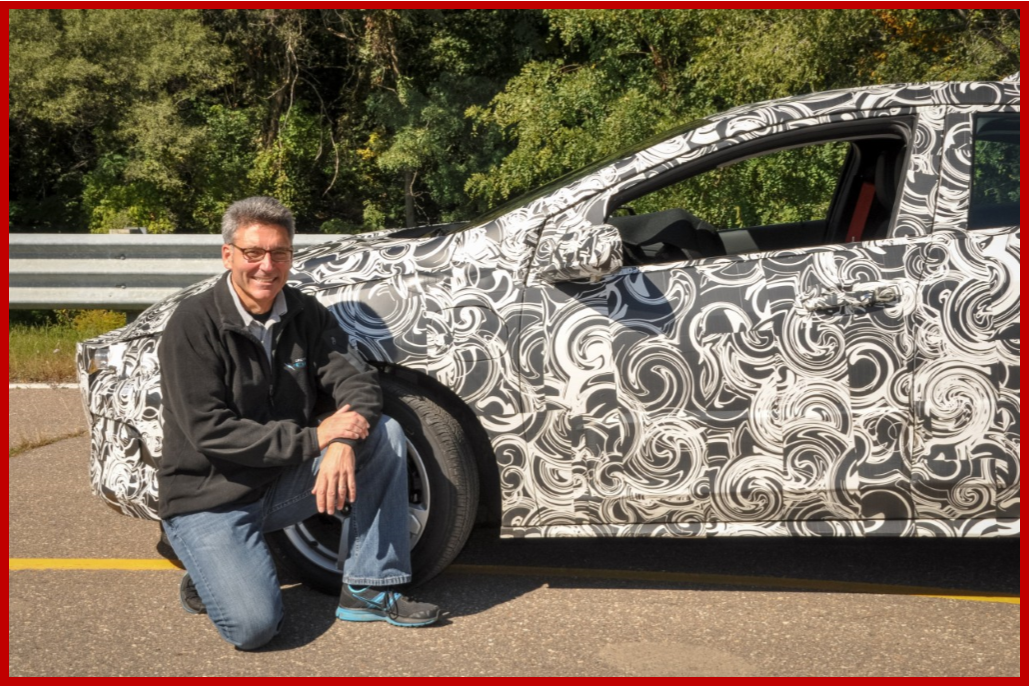Chevrolet Volt Chief Engineer Andrew Farah.
Chevrolet Volt Chief Engineer Andrew Farah and team have are driving camouflaged 2016 Volts to test ride, handling and powertrain performance.Some of the tricks used are:
– Black and white patterns – The color scheme creates a shadow that hides vehicle design elements.
– 3D–Layered camouflage throws off onlookers, but has to be applied without interrupting airflow around the car.
– Swirls – In the old days of car camouflage, the design relied mainly on a grid pattern,
but over the years engineers discovered that grids are difficult to realign if a piece is removed to make a change to the car. Swirl patterns are better at hiding changes.
Bubble wrap – Camouflage can be made from many different materials including plastics, vinyl and foam. Good, old bubble wrap is a lightweight, easily attachable three-dimensional material used to confuse prying eyes.
The camouflage package on the next-generation Volt was started six months in advance of early development. The tricks are constantly updated to keep spy photographers – Jim Dunne, who graciously contributes to AutoInformed – and the curious guessing.


